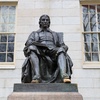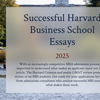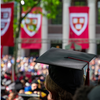It increases the number of different perspectives on any situation, raising the likelihood of innovation and making the organization stronger and more resilient, says Harvard Business School Professor David A. Thomas, who specializes in cultural diversity in organizations. While other dimensions of diversity are important, he says race continues to be one of the most difficult to attain.
But opinions differ on whether diversity is particularly important among the collective group of House Masters. Although administrators, Masters, and students generally acknowledge that more diversity is better, some say their individual attitudes toward diversity may be more important than the diversity of the House Masters as a whole, as most students will interact with only their two House Masters.
Harry R. Lewis ’68, a computer science professor and former dean of the College, says that while diversity in classes and clubs gives students more opportunities to interact with people of different races and backgrounds, in the case of House Masters, “that principle is inoperative because you only see one Master.”
For Lowell House Master Diana L. Eck—who was appointed by Lewis in 1998 along with her partner Dorothy A. Austin—diversity “matters greatly” but “it matters even more who they choose.”
“I think the most important thing among House Masters is not only the diversity among the Masters but the ability of the Masters to foster engagement of students of all kinds within the House,” says Eck, who is part of the first same-sex couple to head a House.
Sullivan echoes this sentiment, saying that while diversity should be a priority, it is just one among many factors that Hammonds should consider when selecting Masters.
“I don’t think there is some uniquely African-American way to master a House,” Sullivan says. “But ethnic diversity is one quality among a host of qualities that Stephanie and I bring to the House that we hope enhances student life.”
Still, others say that more work remains to be done to bring diversity to the House community.
“Harvard is not nearly as diverse a place as it should be at any level—faculty, deans, staff, House Masters, and resident tutors—and we need to do a lot more work,” says J. Lorand Matory ’82, chair of Duke University’s Department of African and African American Studies and a former Harvard AAAS professor.
A PROLONGED PROCESS
The relative homogeneity of the faculty remains a barrier to further diversifying the group of House Masters.
Since House Masters must be tenured Harvard professors, Hammonds’ pool of minority candidates is limited in scope but may increase as the University’s efforts to diversify the faculty continue.
Currently, 24.7 percent of non-tenured professors are minorities, a striking difference from the 13.5 percent of minority tenured professors. As these minorities ascend the academic ladder and some receive tenure, the number of minority full professors is bound to increase, especially when bolstered by efforts to recruit diverse faculty from other institutions.
Michèle Lamont, senior adviser to the dean on faculty development and diversity, has asked departments to develop mentorship programs for junior faculty in hopes of helping them navigate the tenure process.
Knowing that the proportion of racial minorities among non-tenured professors is higher than among full professors, she says she has met with Faculty of Arts and Sciences Dean Michael D. Smith, the divisional deans, and faculty members from underrepresented groups to discuss issues of diversity, and has since held informal meetings for minority faculty members.
Read more in News
UC Reform School












